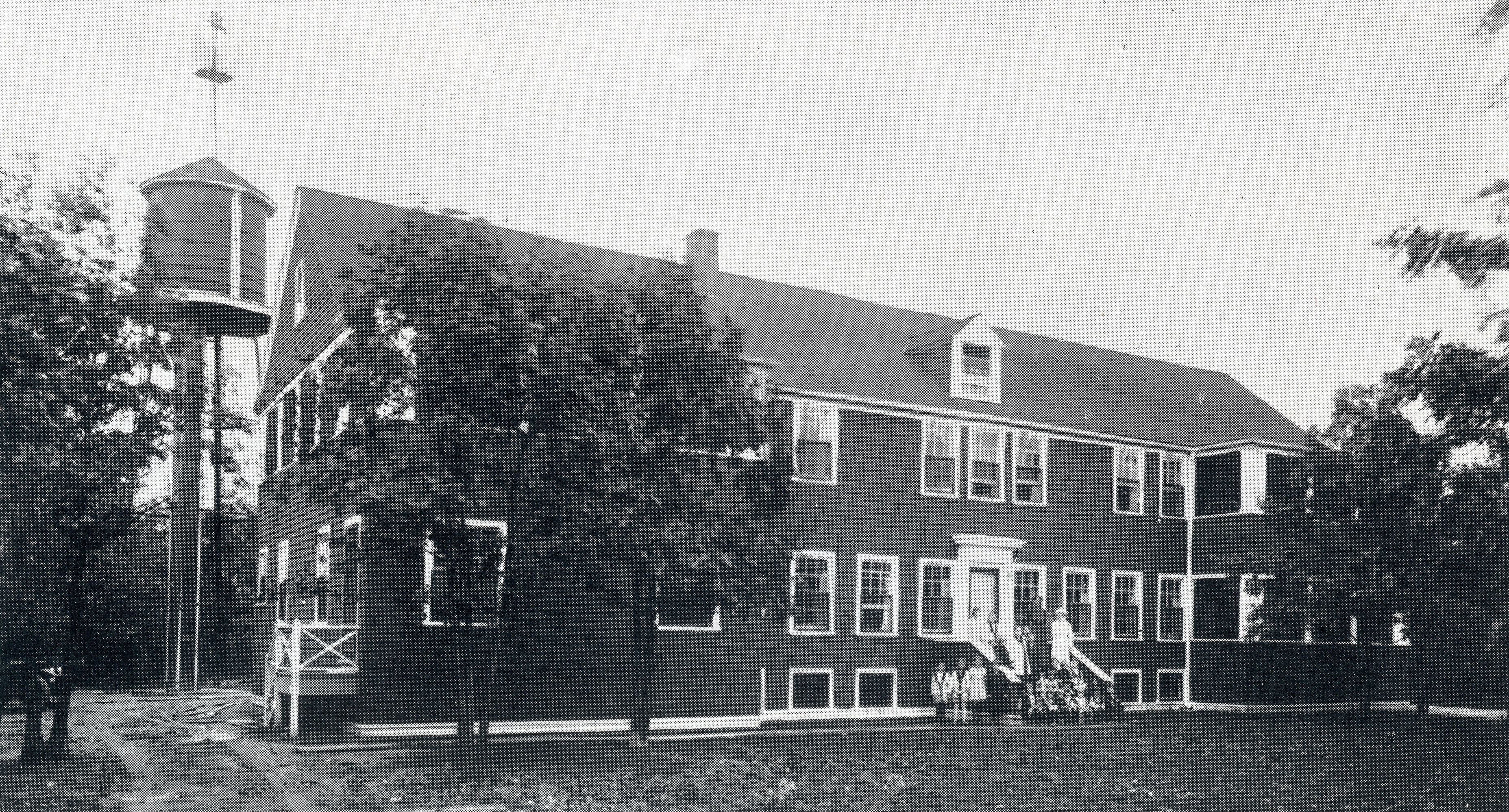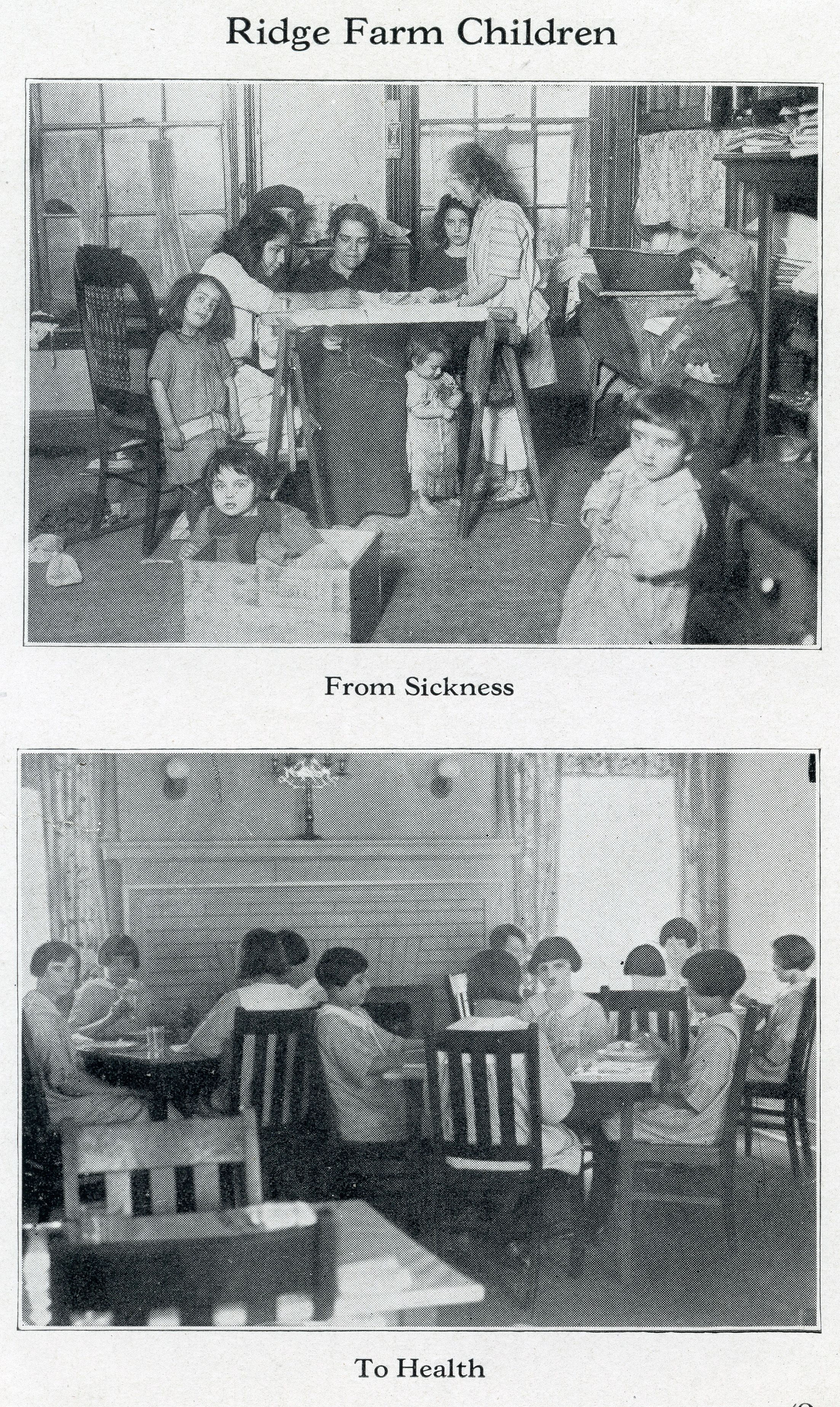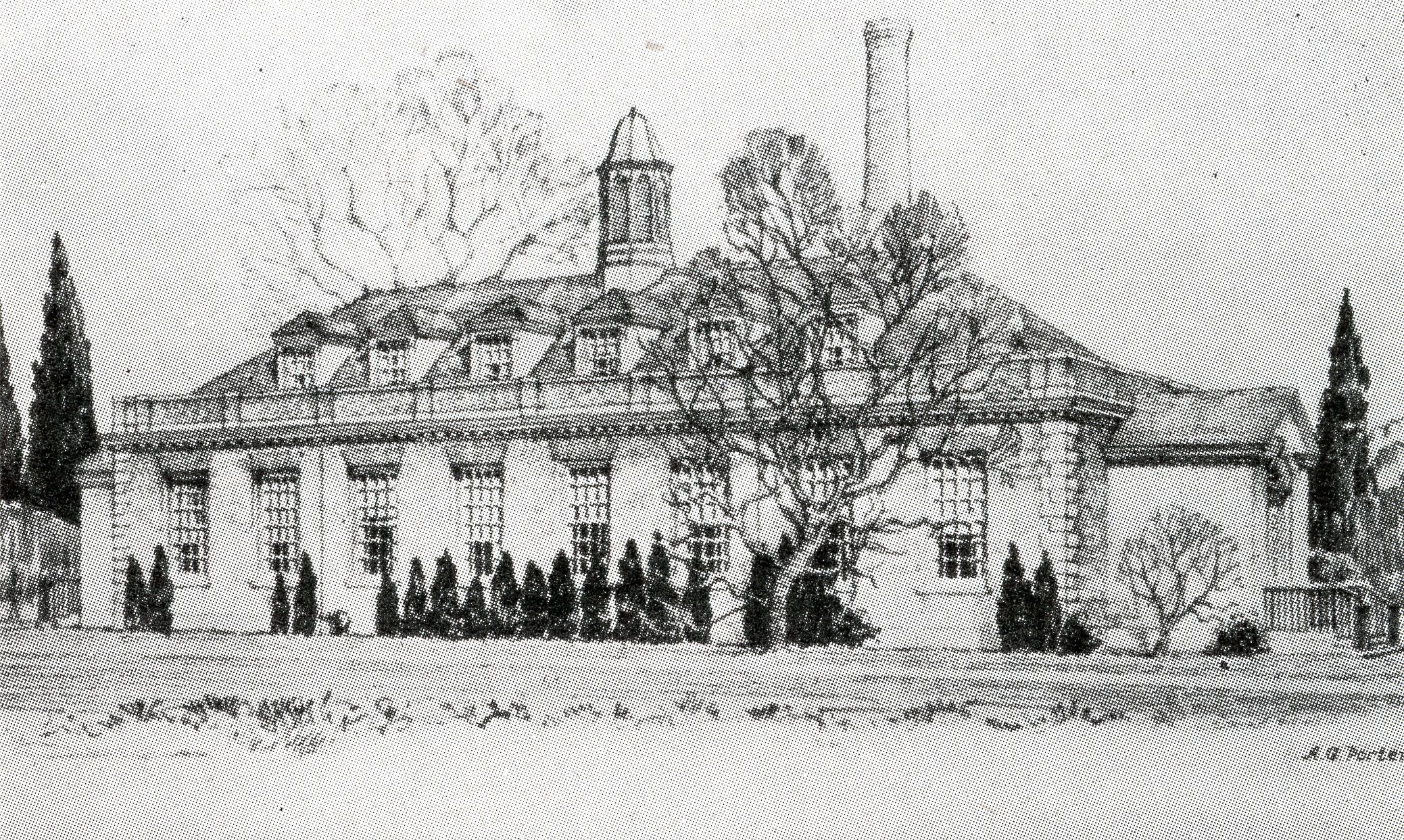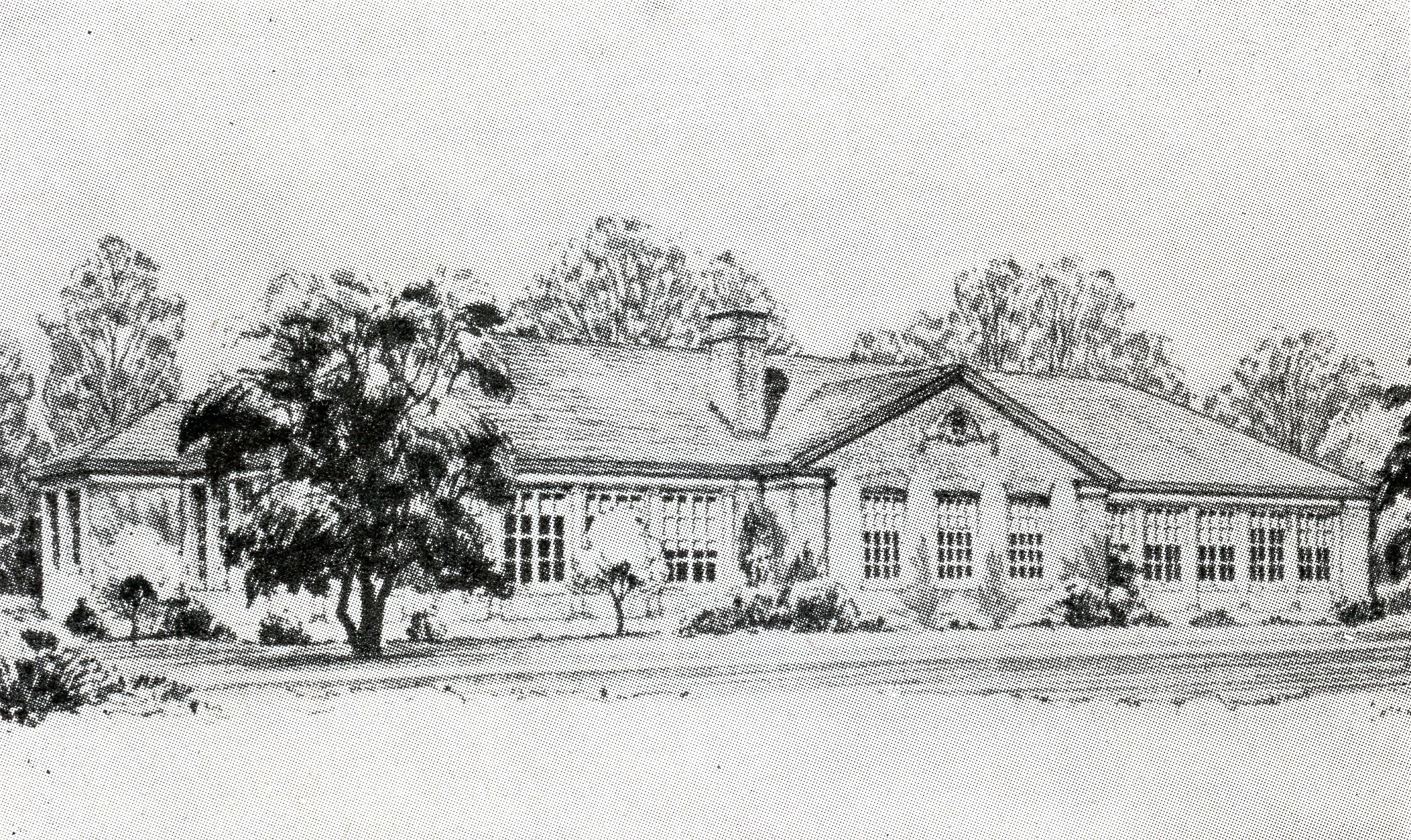
These images, from 1920s promotional brochures, advertise the benefits of a stay at Ridge Farm for urban children.

Students were initially housed in this wood frame building which included two large glass enclosed sleeping porches.

These images, from 1920s promotional brochures, advertise the benefits of a stay at Ridge Farm for urban children.

These images, from 1920s promotional brochures, advertise the benefits of a stay at Ridge Farm for urban children.

1929 drawing, Dickinson Hall.

1929 drawing, William Robert and Alice Ives Stirling Memorial Cottage.
North Shore reformers, led by Alice May Dickinson, established Ridge Farm Preventorium in 1914 to provide children living in poor urban conditions an opportunity to improve their health in the country. Progressive opinions of the time held that fresh air, nutritious meals and proper hygiene would halt the spread of diseases like tuberculosis.
Approximately 85 children annually, ages 8 to 15, stayed an average of five months at Ridge Farm. The children spent hours outdoors, and open windows supplied fresh air for mandated afternoon naps and nighttime sleep. Vegetable gardens and orchards kept the children busy with chores and supplement their diets. A school was maintained onsite and included instruction in cooking and sewing.
Architect Edwin Hill Clark, who along with his wife was on the board, drew up plans in 1927 to expand the campus. Stirling Hall, a dormitory, and Dickinson Hall, a dining facility, were completed in 1929. The buildings were supported by and named for board president Alice May Dickinson and her parents. Later, Bennett Hall, designed by Stanley Anderson, was added in 1949 as an administration building.
As the threat of tuberculosis lessened, Ridge Farm refocused its services in 1946 as a residential treatment center for emotionally disturbed children. Grove School, for children and young adults with special needs, purchased the property in the 1960s. The City of Lake Forest purchased the property in 1997 and turned it into the Grove Cultural Campus.